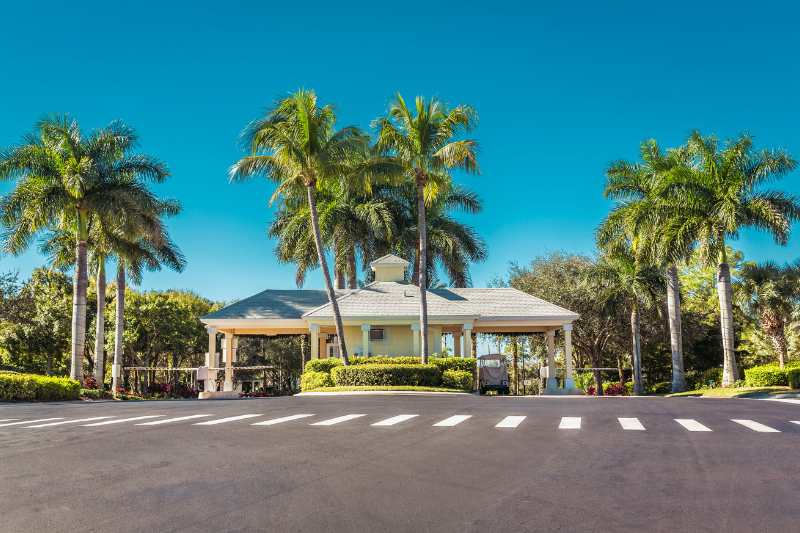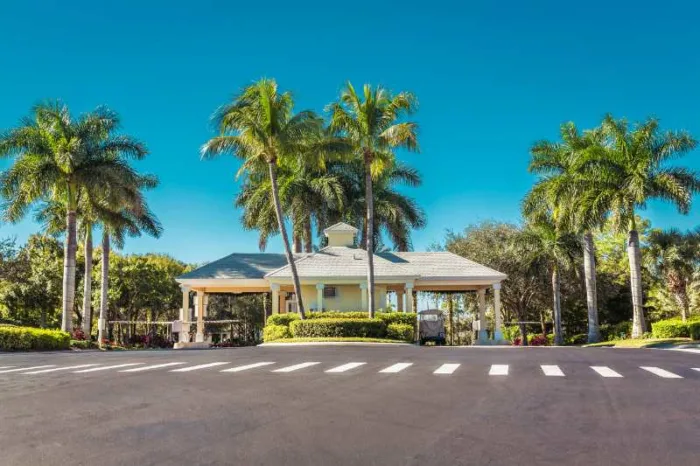Key takeaways
- A guard house is crucial in maintaining security, managing access, and supporting security personnel.
- A well-designed guardhouse is weather resistant and enhances visibility for personnel.
- Integrating a reliable access control solution with a guardhouse can improve security efficiency.

Security is a top priority for residential communities, commercial buildings, and industrial sites. One of the most effective ways to manage access and enhance safety is by implementing a guard house with a gate intercom system at entry points.
These small structures act as access checkpoints, allowing trained personnel to monitor and control who enters and exits a property. Whether it’s a gated community guard house or a guard station for a corporate facility, these installations play a vital role in deterring unauthorized access, recording visitor activity, and maintaining a secure environment.
Below, you’ll learn what a guard house is and why many properties find them necessary. Then, you’ll discover some ways to enhance your guard station for a more robust property management solution.
In this post:
- What is a guard house?
- Key features of a guard house
- What is the purpose of a guard house?
- Enhance your guard house with the ButterflyMX Front Desk Station
- Guard house FAQs
What is a guard house?
A guard house (also formatted as guardhouse) station is a dedicated structure designed to house security personnel who monitor and regulate access to a property. These structures are commonly positioned at entry points of gated communities, commercial complexes, industrial facilities, and even government buildings. The primary function of a guardhouse is to serve as a control hub where security officers can verify credentials, approve or deny visitor entry, and oversee property security operations.
These guarded gate house security stations are responsible for authenticating residents, guests, and service providers before granting access. Equipped with property technology, communication tools, and security cameras, gated community access control acts as the first line of defense against unauthorized entry.
Key features of a guard house
A well-designed guardhouse must be equipped with essential security and operational features to ensure efficiency. These features vary depending on the security needs of a property.
Some of these key features include:
- Durable weather resistance. A guard house must be built with durable materials such as reinforced steel, bulletproof glass, and impact-resistant panels. This ensures that the guard booth can withstand harsh weather conditions, attempted break-ins, or even potential threats like vandalism. Many guard houses also include HVAC systems to maintain a comfortable working environment for security personnel.
- Enhanced visibility. Security personnel inside a guardhouse must have a clear line of sight to monitor incoming and outgoing traffic. Large windows, high-resolution surveillance cameras, and floodlights improve visibility, especially in low-light conditions. Some guard booths are also equipped with automated license plate recognition systems, which reduce wait times and make visitor management more convenient.
- Access control systems. Modern guard house access control solutions include video intercoms, keypads and card readers, and mobile-based credentials that allow security teams to authenticate residents and visitors. Cloud-based access control enables guards to monitor and control entry remotely, making it easier to manage large properties. Additionally, two-way intercoms or video intercoms allow guards to communicate with visitors before granting access.
What is the purpose of a guard house?
A guard house plays a crucial role in maintaining security, managing access, and supporting security personnel. These structures are strategically positioned at entry points of residential communities, commercial properties, government facilities, and industrial sites to enhance overall safety.
- Access control checkpoint. A guard house station serves as the first line of defense against unauthorized entry, regulating and monitoring who enters and exits a property. Someone stationed at a guardhouse can verify credentials, log visitors, and enforce access control protocols to prevent unauthorized entry.
- Perimeter insights. Many guard stations function as observation points along property boundaries, allowing personnel to oversee activity and gain valuable property insights. Equipped with high-visibility windows, security cameras, and communication devices, these stations serve as a deterrent against non-credentialed visitors while enabling guards to respond quickly to surrounding activity.
- Entry management. In some cases, guardhouses double as payment collection points, such as at parking lots, toll booths, or restricted-access facilities. Security personnel may manage visitor fees, process vehicle permits, or oversee guest check-ins, ensuring that only authorized individuals gain access to restricted areas.
- Centralized operations hub. Modern gate house security stations are more than just checkpoints; they also serve as the central hub for managing surveillance systems, coordinating emergency responses, and overseeing property-wide operations. By integrating access control systems, intercoms, and real-time monitoring tools, guard houses provide a streamlined approach to security management.
Discover how the Front Desk Station works:
Enhance your guard house with the ButterflyMX Front Desk Station
Integrating a reliable access control solution with a guardhouse can significantly improve security efficiency. ButterflyMX’s Front Desk Station is an innovative tool that allows security personnel to streamline access control at guard house stations and gated community guard houses.
- Efficient visitor and package management. Personnel stationed at a guardhouse can easily verify visitor credentials, log guests, and track deliveries using ButterflyMX’s Front Desk Software. This eliminates the need for manual logs and improves security accuracy.
- Seamless integration. The Front Desk Station integrates with ButterflyMX Access Control Systems, enabling security personnel to manage access permissions in real time. Guards can see who is requesting entry, communicate with visitors via video, and grant or deny access with a simple tap.
- Cloud-based remote management. Guards don’t need to be physically present at all times to manage security. The cloud-based platform allows security teams to monitor and control access remotely, reducing the need for 24/7 on-site staff while still maintaining a high level of security.
- Improved resident and guest experience. In gated community guard houses, residents can grant guest access through a mobile app or use their smartphone as a gate opener.
ButterflyMX’s Front Desk Station is a valuable addition to any guardhouse, offering a seamless access control solution that enhances security operations. With cloud-based management, visitor tracking, and easy integration with existing security systems, this innovative tool helps property managers and security teams maintain a safe and secure environment.
Guard house FAQs
- What’s the difference between a guard booth vs. a guard house?
- What is the standard size of a guard house?
What’s the difference between a guard booth vs. a guard house?
A guardhouse is a more permanent structure designed for full-time security operations. It often includes advanced access control technology, surveillance systems, and better accommodations for security personnel.
On the other hand, a guard booth is typically a smaller, often portable structure used for temporary or limited-security applications. These are common at construction sites, parking lots, or event venues where security presence is needed for short-term monitoring.
What is the standard size of a guard house?
- 6′ x 8′ (1.83m x 2.44m). This is one of the most popular guard house sizes, as it comfortably accommodates a single security officer while providing enough room for essential equipment, such as a workstation, intercom system, and surveillance monitors.
- 4′ x 6′ (1.22m x 1.83m). A more compact option, this guard booth size is best suited for locations with limited space, such as small parking lots, temporary event venues, or warehouse entrances.
- 8′ x 10′ (2.44m x 3.05m). Designed for multiple security personnel, this option is commonly used at high-traffic entry points, such as corporate headquarters, industrial facilities, and government buildings.






